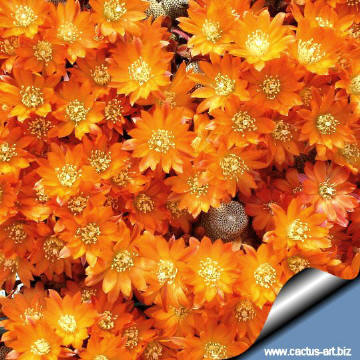|

Synchronic blooming of many individuals
of the cactus
Rebutia heliosa
|
Many plant species need pollinators in order to
cross-pollinate and produce seeds; for this reason the
production of flowers in various plant is relatively
synchronized and all mature individuals of the same species
bloom at the same time, in spite of the variations in
environmental conditions across a region. While such synchrony
could be generated by responses to weather factors, it may
represent an evolved response to optimize reproductive success.
Synchronous flowering of a species across a region may enhance
fertilization and seed set during years with strong flowering
responses as a higher concentration of flowers increases the
probability of pollination. In addition, synchronous flowering
may reduce the proportion of seeds attacked by seed predators
due to predator satiation The resulting pattern is selectively
advantageous in reducing the proportion of seeds lost to
predators
|
|
Furthermore some
plants belonging to different species living in the same area
may simultaneously presents similar typical adaptations for a
very low pollination probability environment converging into
parallel phenological patterns and synchronizes their blooming
cycles so to maximize the attraction of pollinator
For example some
cactus species bloom only once a year (or in a few cycling
phases) and flowers last only one or a few days, so blooming
tends to be massively synchronous with most stems in a
population producing a flowers on a given day.
An other example are
spring ephemerals and bulbous plant (e.g.: hyacinths, and
narcissi) that also all flowering simultaneously. |